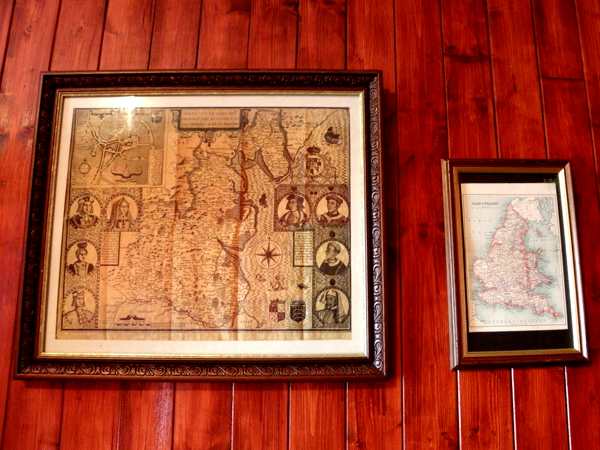There’s a quiet satisfaction in organizing a space, especially when it unearths hidden treasures. Today, while sorting through miscellaneous items for my study, I stumbled upon a fascinating piece of family history: a set of framed maps from a 1910 edition of Cassell’s Popular Educator, inherited from my maternal grandfather, Thomas William.
These weren’t just any maps – they were a portal to the past, a window into my grandfather’s world and the remarkable story of John Cassell, the visionary publisher behind the “Popular Educator.” Delving deeper into their origins sparked a fascinating exploration of self-education, Victorian innovation, and the enduring power of the written word.
John Cassell: From Humble Beginnings to Educational Champion
John Cassell’s life itself is a testament to the power of perseverance. Born in Manchester in 1817, his early years were marked by hardship. Following the loss of his father, his family descended into poverty. Undeterred, John apprenticed himself to a carpenter, a practical skill that would serve him well. Fueled by a desire for personal growth, he became involved in the temperance movement, advocating for responsible alcohol consumption. This experience ignited a passion for education, particularly for those less fortunate.
Walking to London with a Dream (and Three Pence):
John’s ambition knew no bounds. In 1836, at the tender age of 19, he embarked on a remarkable journey – a sixteen-day walk from Manchester to London! He arrived with only three pence in his pocket, but with a heart full of determination. The bustling capital city became his new home, and he immersed himself in temperance work. Soon after, during a lecture tour in Lincolnshire, fate intervened. He met Mary, his future wife, who would become a pillar of support in his ventures.
From Coffee Merchant to Publishing Powerhouse:
An unexpected inheritance from Mary propelled John into a new chapter. He established a tea and coffee business, but his entrepreneurial spirit yearned for more. To promote his wares, John purchased a second-hand printing press. It wasn’t just for advertising – it became a vital tool for spreading his message and publishing his self-written temperance tracts. This entrepreneurial spark eventually led him into a partnership with his brother-in-law.
The “Popular Educator”: A Beacon of Knowledge for the Working Class
John’s true calling lay in education. Recognizing the limited access to learning opportunities for the working class, he set out to democratize knowledge. In 1852, he launched a revolutionary publication: Cassell’s Popular Educator. Published in weekly parts, it cost only three pence per issue, making it an affordable option for even the most modest budgets.
This innovative format proved transformative. Hailed as “a school, a library and a university” rolled into one, the “Popular Educator” offered a comprehensive curriculum on various subjects. From science and history to literature and geography, it empowered countless individuals to pursue self-education and improve their lives.
A Legacy That Lives On: From Grandfather to Grandson
My grandfather, Thomas William, was one of the countless individuals who benefited from John Cassell’s vision. His well-worn 1910 edition of the “Popular Educator,” dated the same year as his purchase, stood testament to his dedication to learning. Here was a tangible connection to his intellectual curiosity and thirst for knowledge. Looking at the price tag – three pence per issue – mirrored the exact amount John Cassell himself arrived in London with. It felt like a strange echo across time.
A Glimpse into the World of 1910: Maps and the British Empire
The framed maps – three fascinating windows into the world of 1910 – offered an additional layer of historical insight. One depicted “The World” on the cusp of the Great War, with vast swathes of pink marking the vast expanse of the British Empire. Another showcased England and Wales with its traditional, pre-amalgamation county boundaries. Names like Cumberland and Westmorland triggered a pang of nostalgia, a reminder of bygone times.
The third map showcased India and Ceylon, still part of the British Raj. Here, the name “Ceylon” triggered another interesting connection. Before being known as Sri Lanka, this island nation held the ancient name of Serendip, a word that birthed the English term “serendipity” – the happy accident of finding something good or useful while not looking for it. It’s a fitting word to describe the unexpected treasures found while organizing my study – a journey into the past that ignited a new appreciation for learning and the enduring power of a single man’s vision.

